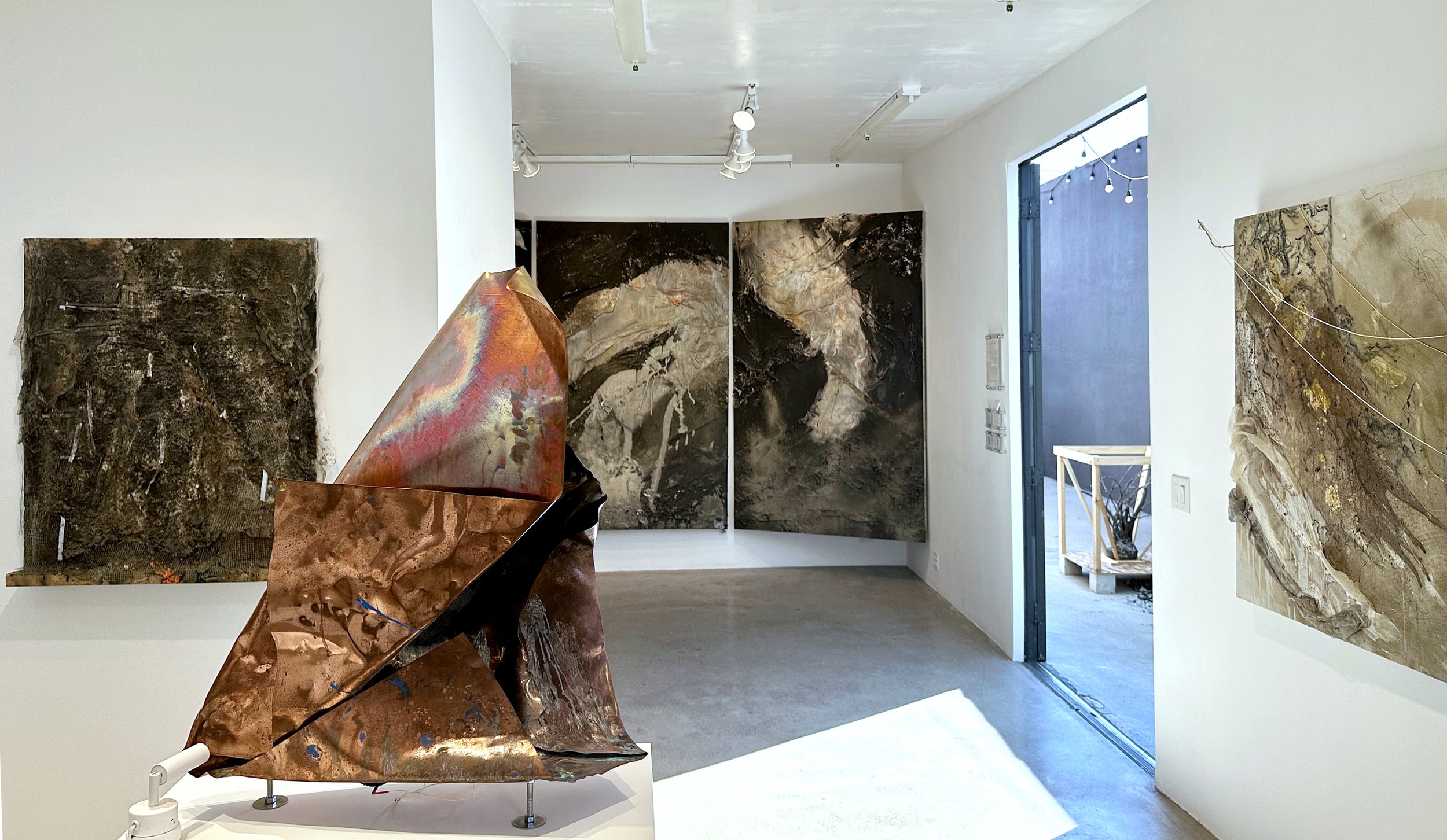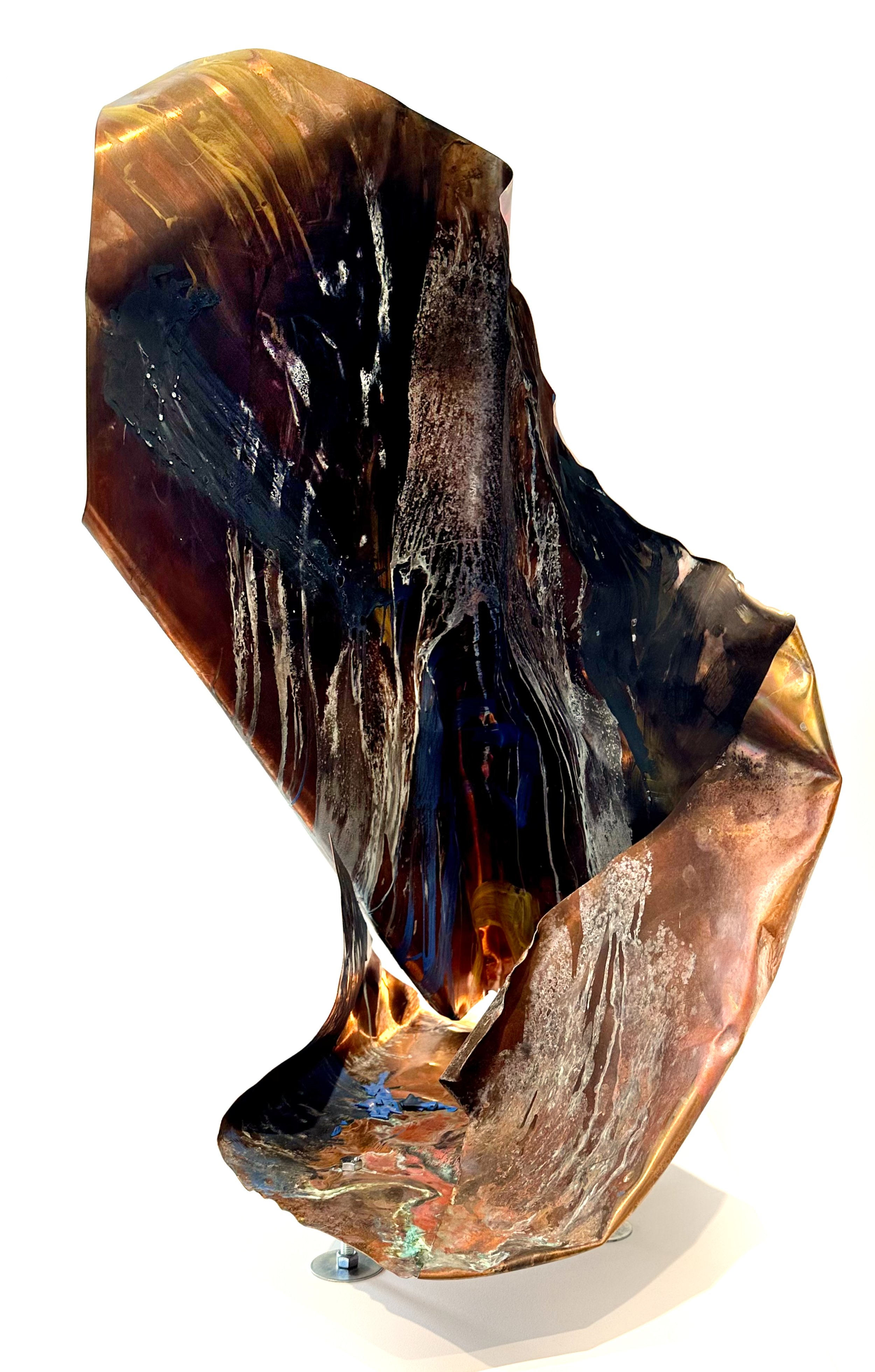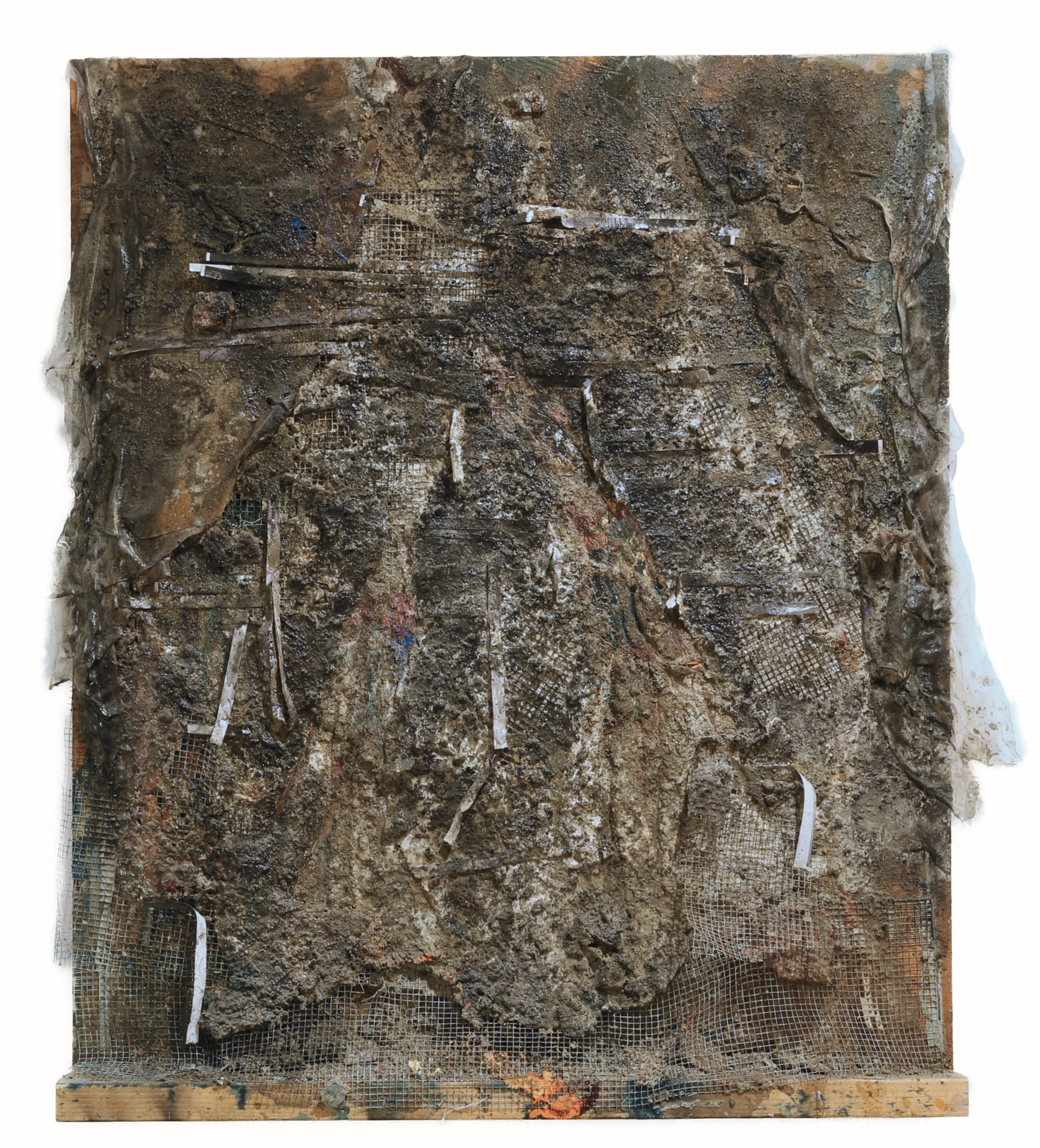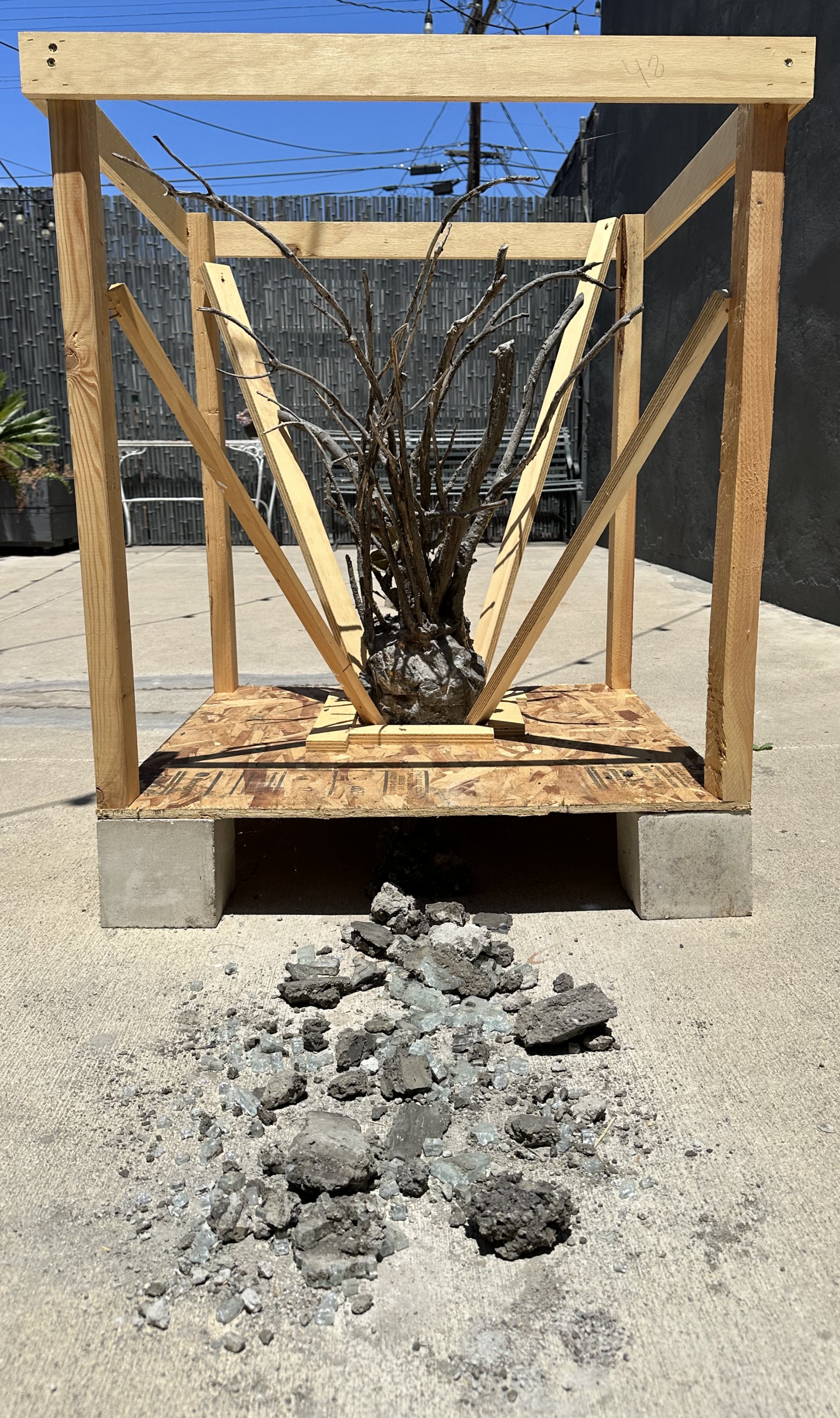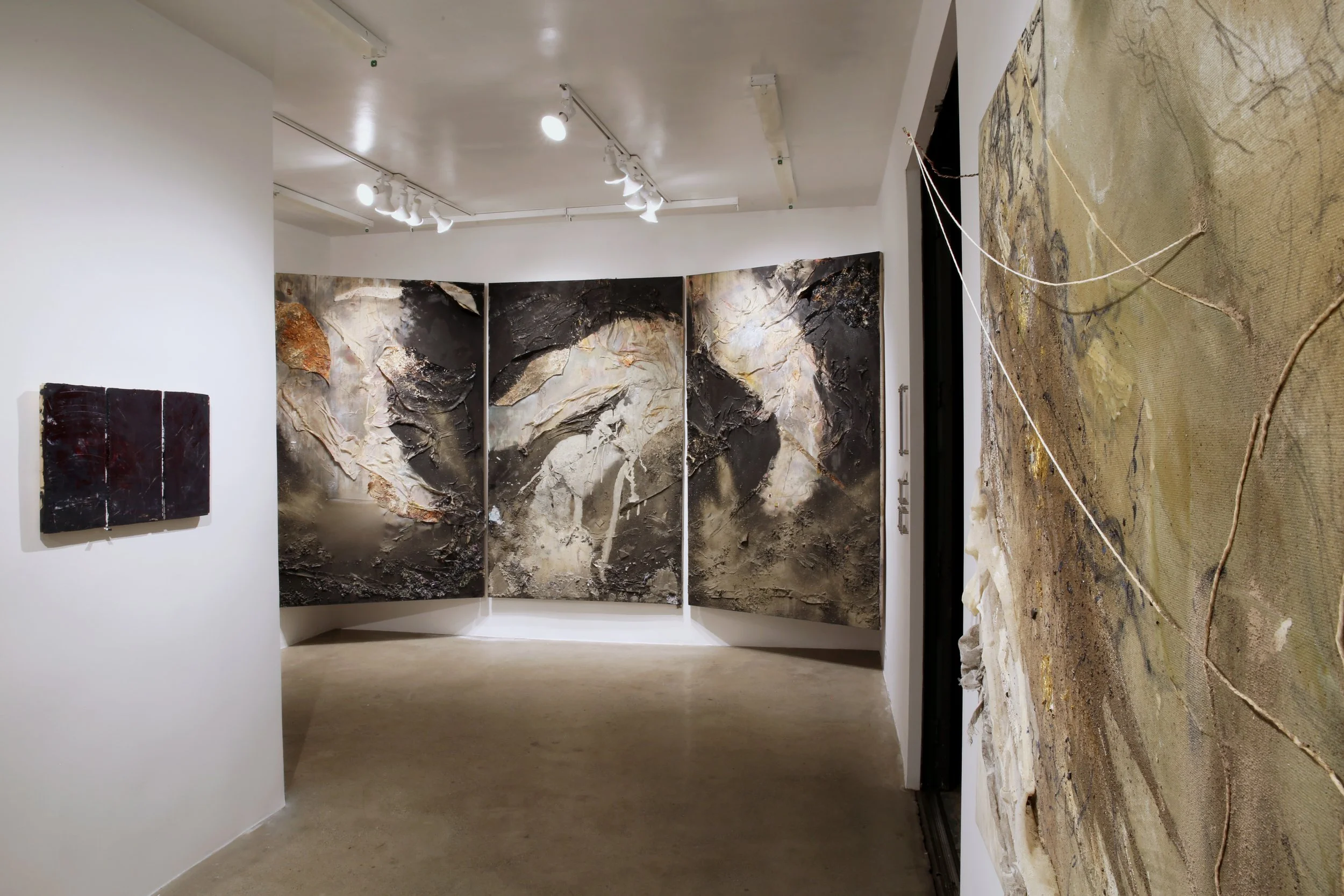Dandelye—or, Beneath this River’s Tempo’d Time We Walk. Saun Santipreecha. July 1 - July 29, 2023. Debut Solo Exhibition.
SHUT
Dandelye—or, Beneath this River’s Tempo’d Time We Walk
Worker: Saun Santipreecha
Duration: July 1 - July 29, 2023.
Location: 2680 South La Cienega Blvd, Los Angeles, CA 90034.
Type: Debut Solo Exhibition
Release: Curate LA
Press: Publisher’s Eye by Alex Garner (Artillery: July 13, 2023); Interview: The Act of Questioning, LA-based Multidisciplinary Artist Saun Santipreecha (Litang: October 24, 2023); Interview with Phillip Johnson (The Art & The Artist: August 13, 2023); Litang (July 18, 2023); Film by L.A. Art Documents (July 20, 2023); This Week’s Must-See Art (Curate LA: June 29-July 6, 2023); Film by EMSARTS (July 4, 2023).
Events: Poetry Reading [July 22]; Woven Histories [Performance: July 8]
Documentation: Limited Edition Print Catalogue; Digital Catalogue; Poetry Reading (Translation Text); Woven Histories (Performance Text).
Recordings: Woven Histories (Second Movement); Let the Wind Speak (Sound Sculpture); Exhibition Videos.
….
Remaining exhibited works are still available through the gallery.
Please contact the gallery with any inquiries via email at: gallery@reisigandtaylorcontemporary.com
The Limited Edition Print Catalogue for the exhibition is available here.
____
Three Elegies, 2023. 96” x 60” each.
….
Reisig and Taylor Contemporary is honored to present the debut solo exhibition of Los Angeles-based Thai artist Saun Santipreecha: Dandelye—or, Beneath this River’s Tempo’d Time We Walk. Emerging from an expansive multidisciplinary practice, the exhibited body of work includes mixed-media paintings and sculpture, as well as a sound installation (with a light/visual component) and a collaborative performance piece. Painted, burned, sculpted, threaded, shellacked, played, and composed, the technical process of each work is a virtuosic performance of how a body continues to become beyond any given limits, between any momentary state.
Seemingly spewing from the core of the earth at the same time as falling from some far celestial reach, Santipreecha’s work takes-place in the ashen form of a secreted, or secreted, catastrophe blistering at the bottom of a smoke-rimmed crater. At the beginning of a pre-history, or at the end of a history on the verge of erasure. Arriving after the massacre has already been cleaned-up, but hemorrhaged stains of faded blood still mark the place where a body once was. Like the light of the stars, the spectacle arrives long after the violent inferno: what is encountered is made serene by a sense of distance from disaster. We are safe now, and so the search for meaning begins: an interpretation of the whispers and thuds of ghosts. But this search for meaning incites its own event. With each sound, site, cite, or sight marking a place we have already been without ever having gone there, the collected works perform a simultaneous movement into the past and the future by performing the act(s) of myth-making and myth-breaking in a single gesture: the cannibal cycle of the serpent devouring itself until there’s nothing to do but to begin eating all over again. The works starve themselves in order to gorge on their meaning. Crucially, however, this movement is not only directional and orientational, nor only theoretical. This movement is deeply embodied; it is the act of being moved as a combination of thought and emotion that occurs as a kind of personal myth-making, a (temporary) place given to meaning in the position or relation of the viewer to an artwork or experience. Left gazing at the stars with an ear to the soil, the exhibition walks a sidereality of skies beneath our feet….
Gazing toward the largest work presented in the exhibition, a triptych titled Three Elegies, the archaeological layers of witnessing, uncovering, and interpreting catastrophe peel-off the work’s igneous surface. The weaving of material and memory enacts a quest for meaning between the limits of personal experience and the histories of others—and the borders of other places. This quest often occurs through fragmented conversations with modern philosophical, theoretical, musical, and literary works and figures looming on high in the Western canon. However, he approaches the mythological status of such texts/authors with a raw intimacy he finds with the suffering of these icons as lived individuals who exist at the margins despite their eventual epistemic or cultural centrality. Describing this aspect of his process with regard to Three Elegies, Santipreecha writes,
Three Elegies is a tangential reference to the works of one of my favorite poets, Edith Sitwell and her “Three Rustic Elegies.” I’ve been struck for a long time by those poems and had always wanted to engage in a kind of dialogue with them but always felt unable to directly. This triptych began as a contemplation on some similar themes as the poems as well as the stoicism many women including my mother maintain through harsh and abusive situations. It began too as a way of contemplating the war in Ukraine and the questioning of borders, hence the use of fragmented dropcloth worked over with various inks and dyes, gessos and shellac with shredded paper and being walked over for days.
This framing of universal events—or events occurring elsewhere but nonetheless shared as a public spectacle—through personal and domestic experience is a constant mode of contextualization and communication across all of the works. But the singularities and specific dialogues between materials and concepts are always unique to each work. With Three Elegies, the juxtaposition of different textures and the terrestrial grounding of cement against the ethereality of the other materials used (shellac, paint, paper, ash…) compose a somber and nearly monumental sense of reflective time. Though, despite the large scale of the works, a viewer arrives at these surfaces as worn tomes demanding to be read in private. Publicly visible, marked, and shared—but personally and privately framed, communicated, and transformed.
Characteristic of much of his surface and sculptural works (and figurally resonant with his sonic and filmic works), the materials of Three Elegies form a kind of grammar for anyone to inhabit. However, like any language, what sustains this grammar is not the materials in isolation, but their relations to one another and their relations to their own self-difference. Specifically, Santipreecha refers to this doubly split relationality of materials as their “symbolic dualisms”: the tensions, or antagonisms, between different states, phases, or meanings associated with particular materials. With concrete, for example, there is a dualism between its symbolism as the hardened pedestal of civilization and its initially liquid form (and the ultimately burdensome and brittle result). With shellac, there is a tension between the natural beauty it captures and re-enacts, its unique origins as a South East Asian (and particularly Thai) resource, and the colonial extraction economies which now make it a “globally” available material. Writing and speaking these materials together, these tensions are presented without overdetermination—this historical context is not necessary to perceive the tension of the materials themselves: one stiff, one flowing; one grey and bleak, one shimmering and bright. Together, they form a minimal pairing of contrasts or contrapositions that allow a spectator to step into metaphors as material activities. Across all media—music, sound, light, surface—the ephemerality of the work rests in the limbo of the dualism of something recorded or mechanized but endlessly changing and evolving in relation to context and contingency.
The exhibition’s initial title, Dandelye, which is also the title of the artist’s recent solo album (2022), signals the speculative and spectral processes at the kernel of his metamorphic work. As an English spelling of a Thai translation of an English word (‘Dandelion’), “Dandelye” disarticulates the act of transmission that occurs between Santipreecha’s alienated homeland and the English language (and new home) he inhabits. Although he was born in Thailand, English is his first-language. While English provides him with the opportunity to ravel himself in the far-reaching formations of an imperial lettered city, it also articulates a rift between the relations that form his personal identity and the originary placement that dictates his nationality. This slippery metamorphosis between languages and positions, between Thai and English, shapes an interstitial mother-tongue through the ventricular irregularity of an asymmetrical vernacular: being Thai and speaking English. This tension between ‘what is’ and ‘who does’ is extended and reiterated in the theatrically enunciated line “Beneath this River’s Tempo’d Time We Walk,” a last line from a novel never (or not yet) fully realized. Looping beginnings and ends, repeating the indistinction of a singular phrase or image, the title of this incomplete novel is also Dandelye. ‘Dandelion’: plentiful in the United States, but rare in Thailand. The first line contains a complex process finely composed in a fragile form set adrift; the second line remembers the imperial tendency to map the Vitruvian proportions of the human meter onto the apparent formlessness of what is already. The errant—but channeled—movement of a river versus the arithmetic timekeeping of a tempo. Performing this rift or cut with the mark of a dash (—), the title suggests a tension between the fragility of natural forms and the anthropomorphic pace imposed on the world by transforming matter into material or structure. Throughout Santipreecha’s work, something lost becomes something gained, and some end becomes some new beginning. An infinity evolves from an endless oscillation of translations, transformations, and permutations.
Ultimately or initially, Santipreecha works with a body’s position within the frames, systems, and narratives it comes to inhabit (and, eventually, overturn or rewrite). Rhetorically and gesturally, this positionality is (temporarily) located by the form of questioning taken-up by any particular work or body. Each work is an inquiry. The work rubs-up against the (historical) boundaries of relational aesthetics from the position of the individual, from the perspective of a secluded and surreptitious subject who winds their isolation around the spaces and times of the others that remind us that any separation is also a point of connection. The intersubjective places between bodies, narratives, and events are thrown back onto the canvas, and then torn back down, in a single gesture moving between distinct senses and disparate media.
A myth is made. A myth is broken. Endlessly and without origin. Set adrift along the waters of an apparition, a drunken boat finds the shore by the hallucinatory sight of a child’s sandcastle.
….
“My work is grounded in the position of questioning—or rather the questioning of position—in relation to frames and systems while acknowledging the inevitable necessity for frame and form to carry intent and meaning, to enable dialogue—ouroboros; the act of breaking myth being itself a form of myth-making.
My work as a whole is the form and process through and within which many of my inquires take, the oscillation between ideas and emotions, the investigation of our need to find meaning which leads to the theme of mythology and myth-making, itself another kind of frame and form which shapes and molds our perceptions of the world.”
….
Saun Santipreecha is an interdisciplinary artist from Thailand who works in both visual and aural mediums. His artistic route in both disciplines began simultaneously, studying privately with two Thai Silpathorn Award recipients for Thai contemporary artists, visual artist Chalermchai Kositpipat and classical pianist/composer Nat Yontararak amongst other tutors and mentors. In 2008 he moved to Los Angeles where he pursued a career in music composition for film, collaborating with artists from multiple disciplines including fashion and video games while also working independently on projects culminating in the experimental album Dandelye (2022). His compositional work in film, TV, and fashion has been screened in over thirty film festivals worldwide including the Cannes Film Festival as well as at New York, Paris and LA Fashion Weeks. He has also worked in numerous capacities in the music department for a number of composers including John Debney, Danny Elfman, The Newton Brothers and Abel Korzeniowski.
He had his debut solo exhibition as an artist in July, 2023 with his exhibition Dandelye—or, Beneath this River’s Tempo’d Time We Walk at Reisig and Taylor Contemporary in Los Angeles, CA. His first international solo exhibition, Per/formative Cities | A Nest of Triptychal Performances, engages with three novels by Italo Calvino through a multimedia sound installation (February 29 – March 15 in Rome, Italy). His second solo exhibition in Los Angeles at Reisig and Taylor Contemporary is titled ...These Things That Divide The World In Two... and coincides with his participation as a panel speaker at the 9th Annual Conference of the Samuel Beckett Society—Beckett and Justice—at California State University, Los Angeles (the exhibition is on view May 25 – June 22, 2024).
His work has been in various group exhibitions in Incheon National University, South Korea, New York, and Los Angeles, and he continues to work with artists and specialists across disciplines.
He is currently based in Los Angeles, CA.
{Biographical text courtesy of the artist.}
_____
